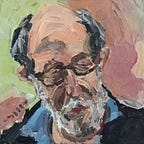Social Psychiatry
The three best known Neo-Freudians are Melanie Klein, Karen Horney, and Harry Stacks Sullivan. I have minimal knowledge and a superficial understanding of their difficult concepts. Melanie Klein was one of the first to introduce play therapy for children, in which she felt she could delineate Oedipal issues as far back as five or six months old. Her concepts of Good Mother and Bad Mother, which I’ve mentioned previously, do make a triad out of the mother/infant dyad. She is well-known for her concepts of partial object relations, a defense mechanism of projective identification, as well as others have so far beyond my understanding. She influenced many prominent analysts including Margaret Mahler,Winnicott, and Kernberg, just to name a few. Regarding Karen Horeney, I have little or no information about her concepts. Third is Harry Stacks Sullivan, who I have previously mentioned, whose ideas were the major force in the school of social psychiatry.
Melanie Klein, who was not a physician, began in Eastern Europe and at some point moved to London, where Sigmund Freud and Anna Freud practiced. Karen Horneye moved to New York, and her institute is there in midtown Manhattan. Harry Stacks Sullivan practiced and taught at Chestnut Lodge near Washington up until the 1960s. The social psychiatry movement includes some individual but mainly family, couples, and group therapy. Although most of my practice was in the biochemical school in a hospital setting, and outpatient practice was about 40% of my time, and 60% of that was group, family, and couples therapy; addiction treatment was a fair sized part of my overall practice, and about the same percentage as I have said above for hospital and outpatient care. It seems that individual psychotherapy is the largest part of an outpatient practice and has now, due to the increased importance of managed care, become the domain of social workers and psychologists.
Judging by the things that I enjoy learning about, group and family are my major interests. It is my contention that Greek drama is a textbook of its own in dysfunctional family mythology. My view of various modes of psychotherapy is that the relationship between therapist and client is that of parent to child from the therapist’s point of view- however, from the client’s perspective, it is that of child to parent. On the other side, at group therapy, we have a situation where the whole family is in the room. From the therapist’s standpoint, group or family is more frightening than it is for him to do individual therapy. It is also my contention that it is inefficient in both time and cost for the client to talk to their parent alone rather than their family. My almost universal recommendations for adolescents was group therapy and family therapy alongside it, both on a weekly basis. To quote one of my favorite instructors: “Neurosis could be helped by individual therapy, but probably not by group. People in group will almost always become more mature, but not in individual therapy.” -Malcom Pines, who is a psychiatrist in London.
